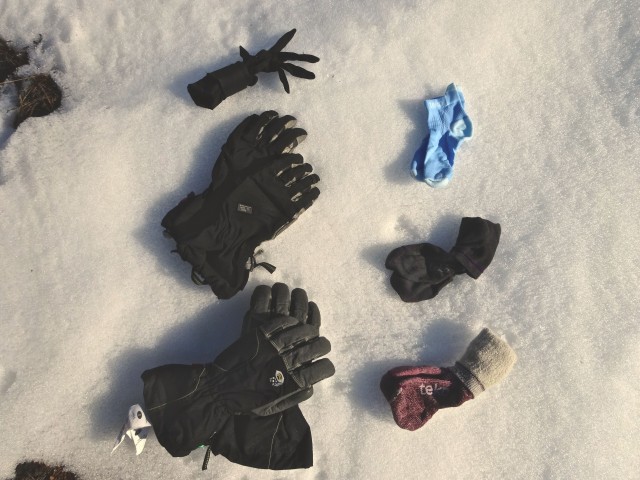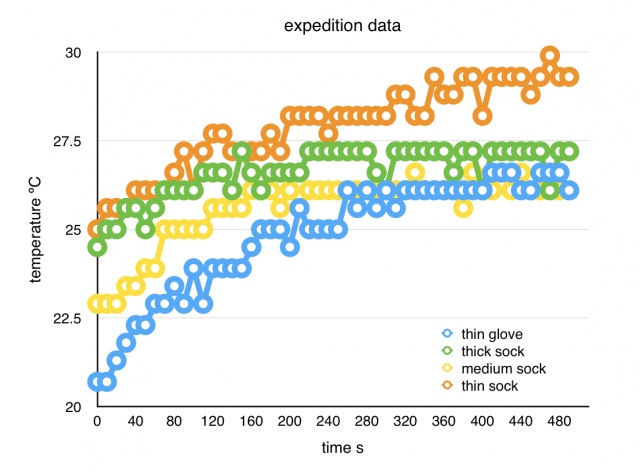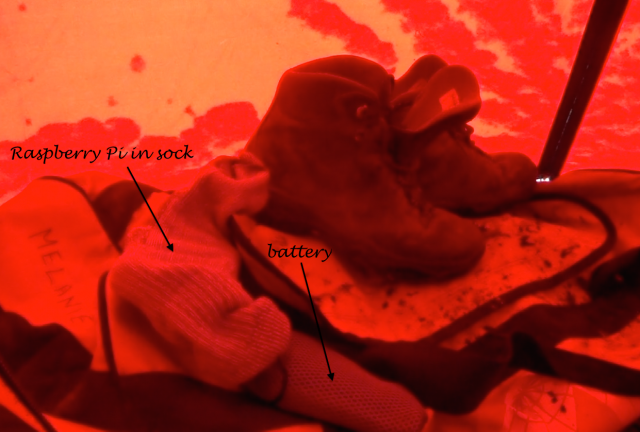Mountain Science – preliminary results 5
This post is about an experiment I did that gave quite unexpected results.
As well as looking at insulation of particular fabrics, as in the previous blog, I wanted to have a look at the insulating properties of some of my stuff – my socks and gloves. I did this using a Raspberry Pi. Anyone with a Pi can set theirs up so they can do this too. If you do, please share your results with me.
The Raspberry Pi was set up with a temperature sensor and a real-time clock. For information on how to do this see http://www.raspberrypi.org/learning/temperature-log/ When plugged in to a battery it boots up then takes temperature readings every ten seconds for 500s in total. Then it turns off.
I did the experiments when I was confined to my tent during the snow storm on the way to Putha Hiunchuli. Below is a picture of the items I tested: three pairs of Teko socks (thin, medium and thick); two pairs of Mountain Hardwear gloves (medium and thick); and a thin pair of silk liner gloves.
The experiment involved putting the warmed Raspberry Pi in a sock or glove, turning it on and putting the ensemble out in the cold while it took readings. The Pi was warmed in my sleeping bag between readings. This kept me occupied for most of the afternoon while we were snowed in.
When I returned to England I downloaded the data from my Raspberry Pi. Unfortunately, not all the runs had saved properly, but what I have is plotted below. Do you notice anything odd about this graph? Would you accept these results?
Yup, it’s going the wrong way. In the tent porch, according to this data, the Raspberry Pi was warming up not cooling down. Hmmm. This is a mystery. I still don’t know why this happened. Was the Pi placed too close to the battery and the battery heating up? (See picture below of the grubby experimental conditions.) It seems unlikely, but I have no idea why the porch was warmer.
I repeated the experiment at home, this time putting the Raspberry Pi in the freezer as it took readings. At home the Pi was in the bottom drawer of the freezer and the battery hanging outside so it couldn’t affect the Pi. I did it just with socks this time, adding a very thick Teko expedition sock. The results are below.
These data look a bit more like we would expect – the Raspberry Pi is getting colder! We can also see that the thicker the sock the warmer it kept the Pi, .i.e. the better the insulation. The thicker socks trap more air, as discussed in the previous blog, so they keep our feet warmer.
This experiment is interesting because it teaches us to think about what we expect and not to accept the data blindly. Repeat the experiment if necessary. I should really do this one again somewhere else and compare my findings. If anyone else does reproduce this experiment, please share!
Thanks to Zoltán Szenczi and to my sponsors:






